Search Results

What’s Next in Blood Cancer: Looking Ahead to 2023
The most important blood cancer scientific meeting, the American Society of Hematology (ASH), is held every December.
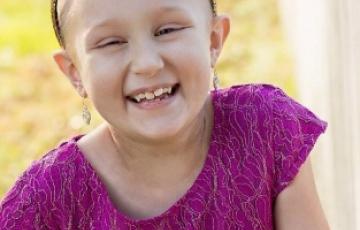
Katie
Katie is a beautiful young girl who was diagnosed with T-cell Acute Lymphoblastic Leukemia on January 24, 2015. Her cancer is particularly aggressive and presented with subtle signs such as lethargy, loss of appetite, and just a general change in personality. Her family took her to the ER just to find that she had masses in her lungs, liver and spleen.

Imani
I was diagnosed with myelodysplastic syndrome (MDS) on my 11th birthday after having nosebleeds that lasted hours for months. Throughout my treatments, which included radiation and chemotherapy for a bone marrow transplant, it was my nurses who were there educating me and my family and helping me stay hopeful and entertained throughout the weeks. Even though it was really difficult, they helped us through it. I wanted to share my experience with other kids, so I wrote and published a book that I was able to dedicate and donate to my hospital a few years later.

Lori
Our daughter Britta Wolfarth was 19 when she was diagnosed with AML. We were shocked because we thought it was a blood disorder due to her lupus. The same day for the guy diagnosed she started treatment at West Penn in Pittsburgh right away.
Britta underwent months of chemo and radiation. Britta had to have a bone marrow transplant. Her first owner fell through but the transplant team at West Penn never gave up and found us another donor 2 months later from the National Registry.
Firefighters and Cancer Risk
Firefighters are at an increased risk of developing cancer. There are steps to take that can reduce that risk.All firefighters, regardless whether they are career or volunteer, put their own lives at risk to save others in their communities. In addition to the danger of putting out fires, firefighters are at an increased risk for different types of cancer due to the smoke and hazardous chemicals they are exposed to in the line of duty. There have been multiple studies that show this increased risk for cancer.
Investigating the Impact of Insurance Coverage on Access to Care and Outcomes among Lymphoma Patients
In this proposal we will investigate the association between insurance coverage and access to care, survival, and financial hardship among patients across Non-Hodgkin lymphoma (NHL) subtypes and to what extent insurance coverage explains and modifies racial disparity in access to care and outcomes. To this end, we will use the Optum Clinformatics DataMart database, the Texas Cancer Registry, the Harris Health System Cancer Database and Data from the Lymphoma Epidemiology of Outcomes (LEO) Cohort Study.
Jim
My brother Jim was an amazing man. He was a person for whom family was everything. He ran a plumbing business with his brothers and took pride in its success, but he was so much more than his work. We called him “The Renaissance Plumber” because he was so knowledgeable on so many topics ― history, literature, music, politics, sports. He was also a wonderful cook and a genial host. He lived life to the fullest. His leukemia diagnosis was a terrible blow, coming within months of the tragic death of our younger brother.

Preston
Preston was a regular 12-year-old kid who loved being active and was obsessed with playing basketball. He got sick in August and was still having a hard time recovering in late September. We realized he needed a thorough check-up and decided to bypass the doctor’s office and go directly to the ER. He had been extremely lethargic and was losing weight. His lips were pale, and his body was cold to the touch.
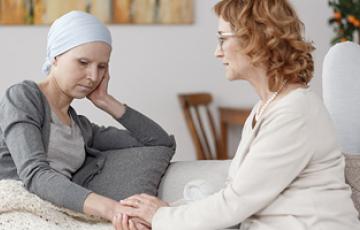
The Financial Burden of Blood Cancer Treatment for Working-Aged Adults is Growing
Cancer is one of the most expensive medical conditions to treat in the U.S. As a result, patients, survivors, and caregivers—already challenged by the physical and emotional burdens of cancer—often face growing medical debt.
Large Granular Lymphocytic Leukemia
Large granular lymphocytic (LGL) leukemia is a type of chronic leukemia affecting white blood cells called "lymphocytes." Lymphocytes are part of the body's immune system and help fight certain infections. LGL leukemia is characterized by enlarged lymphocytes, containing noticeable granules, which can be seen when the blood is examined under the microscope. There are two types of LGL leukemia: T-cell (T-LGL) and natural killer cell (NK-LGL). Each type may be chronic (slow-growing) or aggressive (fast-growing).

Ann
After being in remission from acute myeloid leukemia (AML) for 12 years, things were going well for me. Then a day after my 48th birthday, I was diagnosed once again! It hit me really hard, and I could not seem to get past the words from the doctor, "You have_____."

Lauren
At the age of 33, I was diagnosed with acute myeloid leukemia (AML). I immediately started undergoing treatment which initially consisted of intense induction chemotherapy followed by consolidation chemotherapy and then a haploidentical stem cell transplant. My 64-year-old father was my only donor option as I did not have any matches on the national registry. My two sisters were less than half matches, and my mother’s history of having had a stem cell transplant herself precluded her from donating.
Early Detection and Intervention in Smoldering Multiple Myeloma: population-based screening and treatment; Edit-SMM
We build on the success from the Iceland Screens, Treats, or Prevents Multiple Myeloma (iStopMM) study, where over 80,000 consented to a nationwide screening for MM precursors. A unique cohort of patients with SMM diagnosed in iStopMM will be followed by clinical evaluation, linking to central health data registries, using novel biomarkers, and in-depth genetics. With precision early treatment we aim to induce a paradigm shift leading to improved quality of life and potentially a cure for MM.Types of Home Care
Types of Home CareYou have many options when it comes to choosing the type of home care service you prefer:
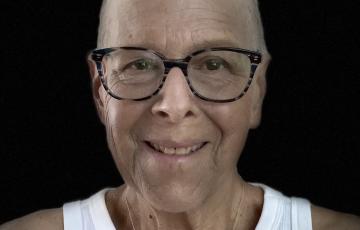
Laura
It’s hard to even know where to begin. I was 63 years old, a happily working professional in health policy and advocacy. I know the power of an organization like The Leukemia & Lymphoma Society (LLS); a daughter, wife, mom, grandma, and dog mom.
I was traveling with my husband, and I had a side pain. I thought might be a gallstone.
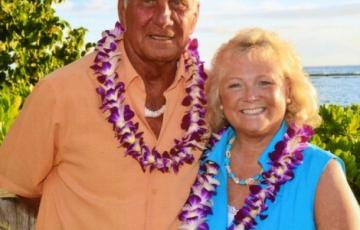
Sue
It’s 2015 and I am doing my happy dance! It’s been 20 years since my bone marrow transplant for my chronic myeloid leukemia (CML) and I am still here enjoying what life brings my way.

Eva
In 2014, as a 19-year-old sophomore in college, I was diagnosed with Hodgkin lymphoma (HL). After two years of suffering from a mystery illness, I finally had answers; my itchy feet, night sweats, frequent infections, and shooting pain all snapped into place with a cancer diagnosis. I called all of my closest friends and packed my bags. I’d moved 3,000 miles for college, and traveled all the way back home — Los Angeles to Boston — for treatment. Next up would be six months of ABVD chemotherapy, known to be very effective and very unpleasant.
Towards Equity in Specialized Cancer Care for Adolescents and Young Adults with Newly Diagnosed Acute Lymphoblastic Leukemia
Our study is designed to directly inform the pathways through which health insurance influences access to care at an SCC for individuals with AYA ALL using a combination of cancer registry, survey, and cost-benefit analyses.Home Care
You don't necessarily need to depend on inpatient medical facilities to meet all your healthcare needs. If your condition allows, you can get the quality care you need at home and avoid the inconveniences of hospitals, nursing homes and rehabilitation facilities.
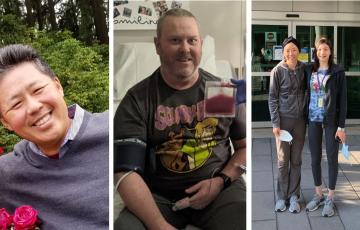
A Source of Hope: Understanding Bone Marrow and Stem Cell Transplants
Imagine a community filled with families, friends, and healthcare professionals united to transform the meaning of living with blood cancer. This diverse group of people—including researchers, doctors, care partners, and healthcare teams—are bound together by hope, resilience, and a shared goal: to overcome the challenges and live longer better lives.
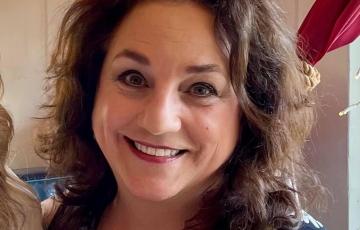
Tina
Today I am CELEBRATING!! AHHHHH, SO BLESSED!!! It’s been 20 years since my leukemia diagnosis! I am celebrating because of so many reasons!
The Impossible Choice: The Role of Insurance Design on Financial Toxicity and Access to Care for Individuals with Blood Cancer
The overall goal of this project is to understand the role of insurance design on financial toxicity and access to care among individuals with blood cancer. To understand this interplay, we will use a unique and innovative linkage of the 2012-2019 Colorado Cancer Registry (CCR) to the 2013-2021 Colorado All-Payer Claims Database and the LexisNexis and TranUnion financial and life event databases.
Todd
In July of 2017, I had what I thought was a lingering summer cold. After several days of feeling terribly fatigued, I started noticing my gums were tender and bleeding. I also noticed red spots appearing across my face and chest. That's when I went to my primary care doctor and he advised me to go to the emergency room. The look on his face told me he suspected something serious. At the ER, I had a complete blood count workup, and soon after the attending doctors confirmed that I had acute myeloid leukemia.
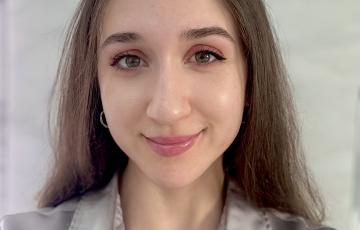
Ariana
In the blink of an eye, our lives can crumble underneath us like a tsunami drowning the life out of a city. Many of us unknowingly stand on the edge of an eroding cliff and one slip away from relinquishing our most desired aspirations. At 19 years old, I stood inches away from the edge of that cliff when I was diagnosed with essential thrombocythemia (ET). This was one of the most defining moments in my life that propelled me into a tenacious desire to become a physician capable of fully understanding the fragility of life.